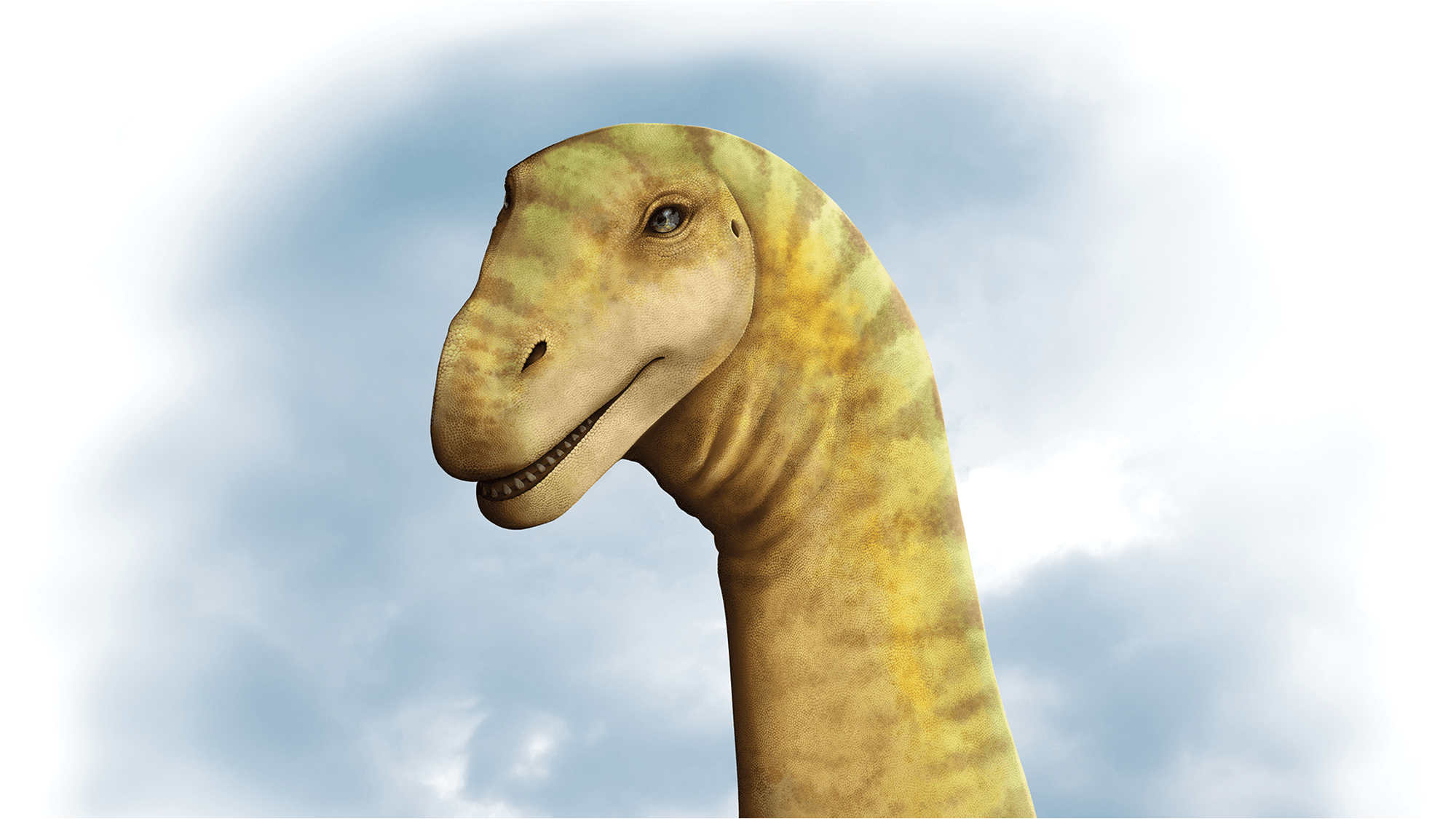A dinosaur skull found in Queensland, Australia has the exciting honor of being dubbed Australia’s first nearly complete sauropod skull.
Research published April 12 in the journal Royal Society Open Science describes the 19.6 inch long skull, and details that the find was from a species Diamantinasaurus matildae (D. matildae). Diamantinasaurus is a member of the group Sauropoda, which also includes the more famous Brachiosaurus and Brontosaurus and are known for small heads, long necks and tails, and barrel-like bodies.
[Related: Cushy feet supported sauropods’ gigantic bodies.]
The dinosaur. nicknamed ‘Ann,’ was discovered by the Australian Age of Dinosaurs Museum in 2018 near Winston in central Queensland. Ann is the third fossil specimen of D. matildae to have been discovered by this museum, and the fourth specimen overall. It lived in Australia over 100 million years ago and fell under the titanosaur group– a category of sauropods that included the largest animals to live on land in Earth’s history. D. matildae was a middle size sauropod, with the largest members reaching close to 131 feet long and over 170,000 pounds. Sauropods were also herbivores, subsisting entirely on a diet of plants.
The team on this study said that it is rare to find a sauropod skull at all, especially one so well-preserved. It is only the fourth specimen of D. matildae ever found and the analysis of this first nearly complete skull is helping scientists learn more about the animal’s feeding habits, relationship to other sauropod dinosaurs, and physical anatomy. According to the team, Ann is not only the first sauropod dinosaur found in Australia that includes most of the skull, it also is the first Diamantinasaurus specimen to preserve a back foot.
“In analyzing the remains, we found similarities between the ‘Ann’ skull and the skull of a titanosaur called Sarmientosaurus musacchioi, which lived in South America at about the same time as Diamantinasaurus lived in Queensland. These include details of the braincase, the bones forming the back end of the skull near the jaw joint, and in the shape of the teeth (which are conical and curved),” co-author and Curtin University paleontologist Stephen Poropat said in a statement.
[Related: This dinosaur’s record-breaking neck defies the laws of nature.]
According to Poropat, the findings support earlier theories that suggests sauropods used Antarctica as a pathway between Australia and South America during the mid-Cretaceous period–between 100 and 95 million years ago.
“Warmer conditions that far south might have been favorable for them. The window between 100 and 95 million years ago was one of the warmest in Earth’s geologically recent history, meaning that Antarctica, which was more or less where it is now, had no ice,” Poropat said. “Similarly, Australia, which was much further south than today, was warmer with less seasonality. In that climate, Antarctica was forested, and might have been an attractive habitat or pathway for wandering sauropods.”
The study suggests that Diamantinasaurus was one of the most ‘primitive’ or not as evolved titanosaurs. Learning more about this species of giant dino might explain why they were so successful until the dinosaurs’ mass extinction.

